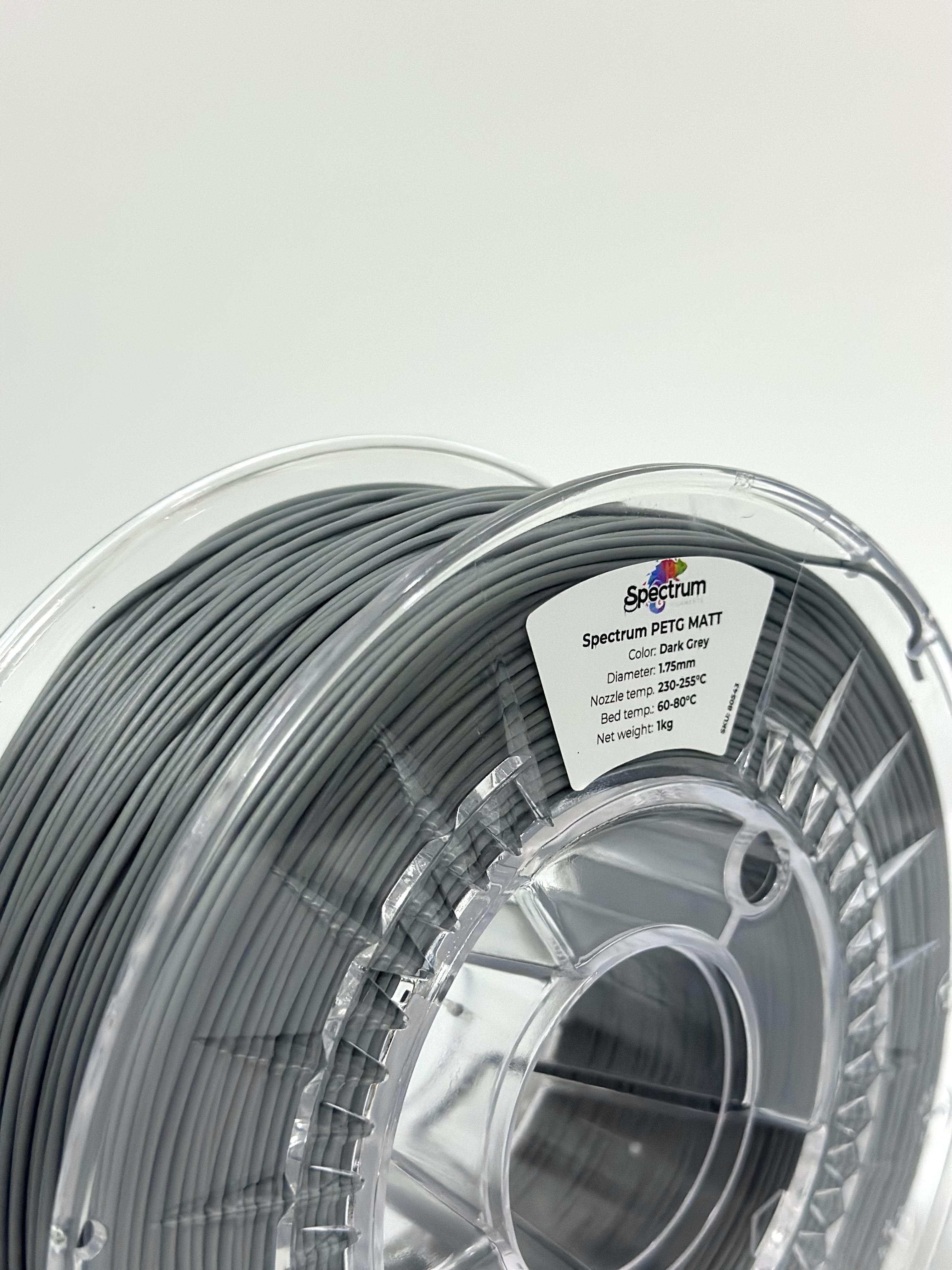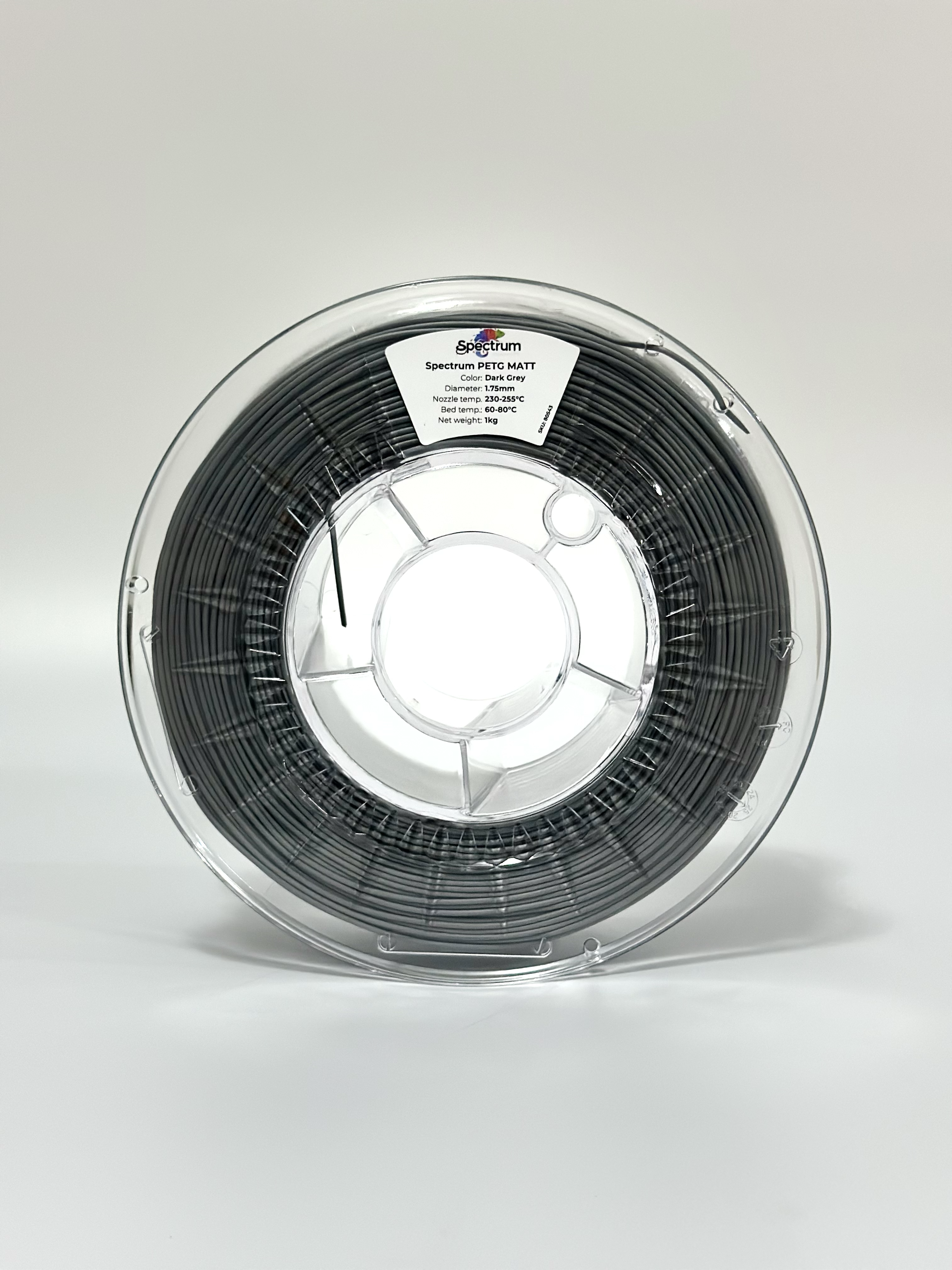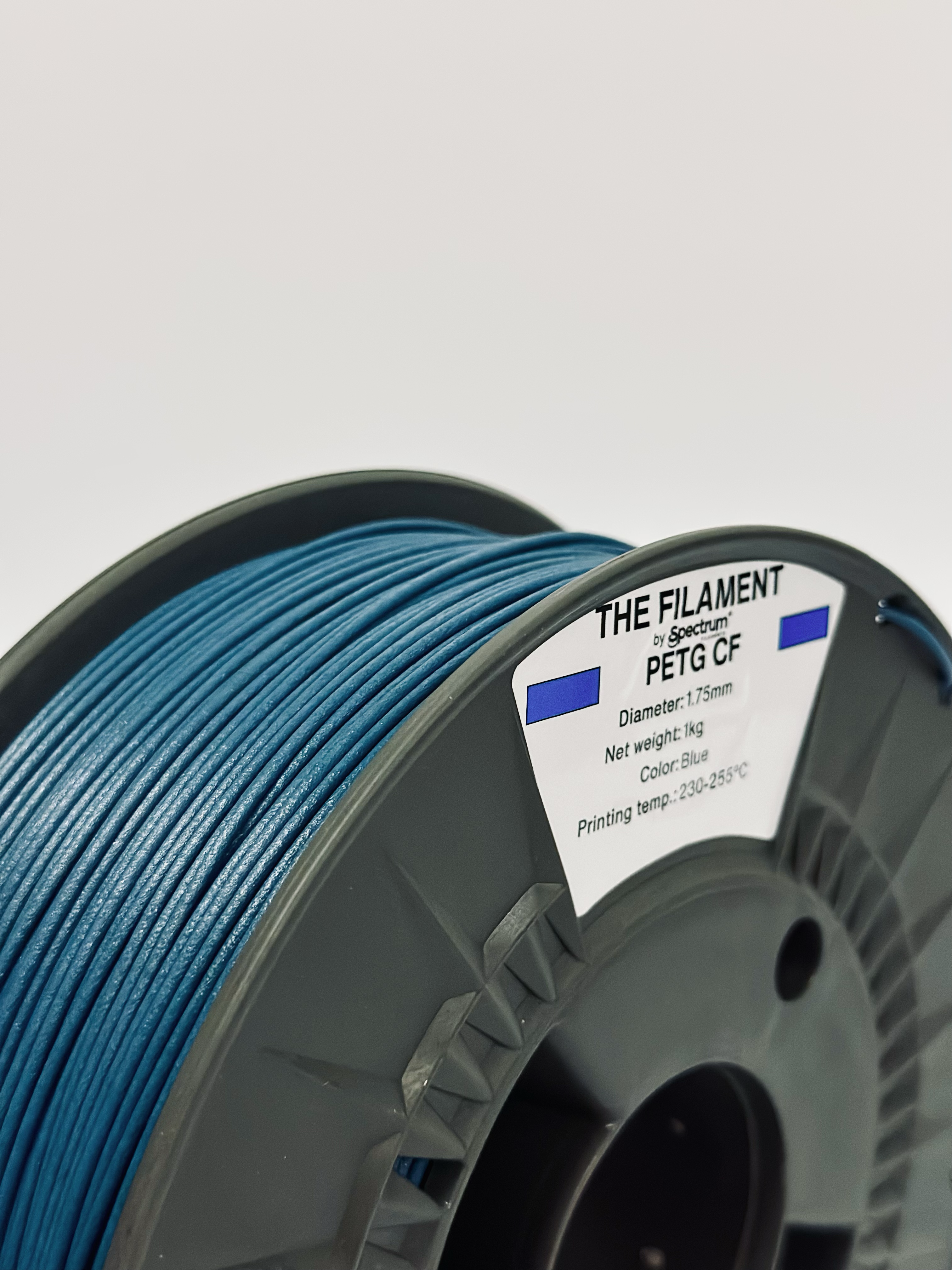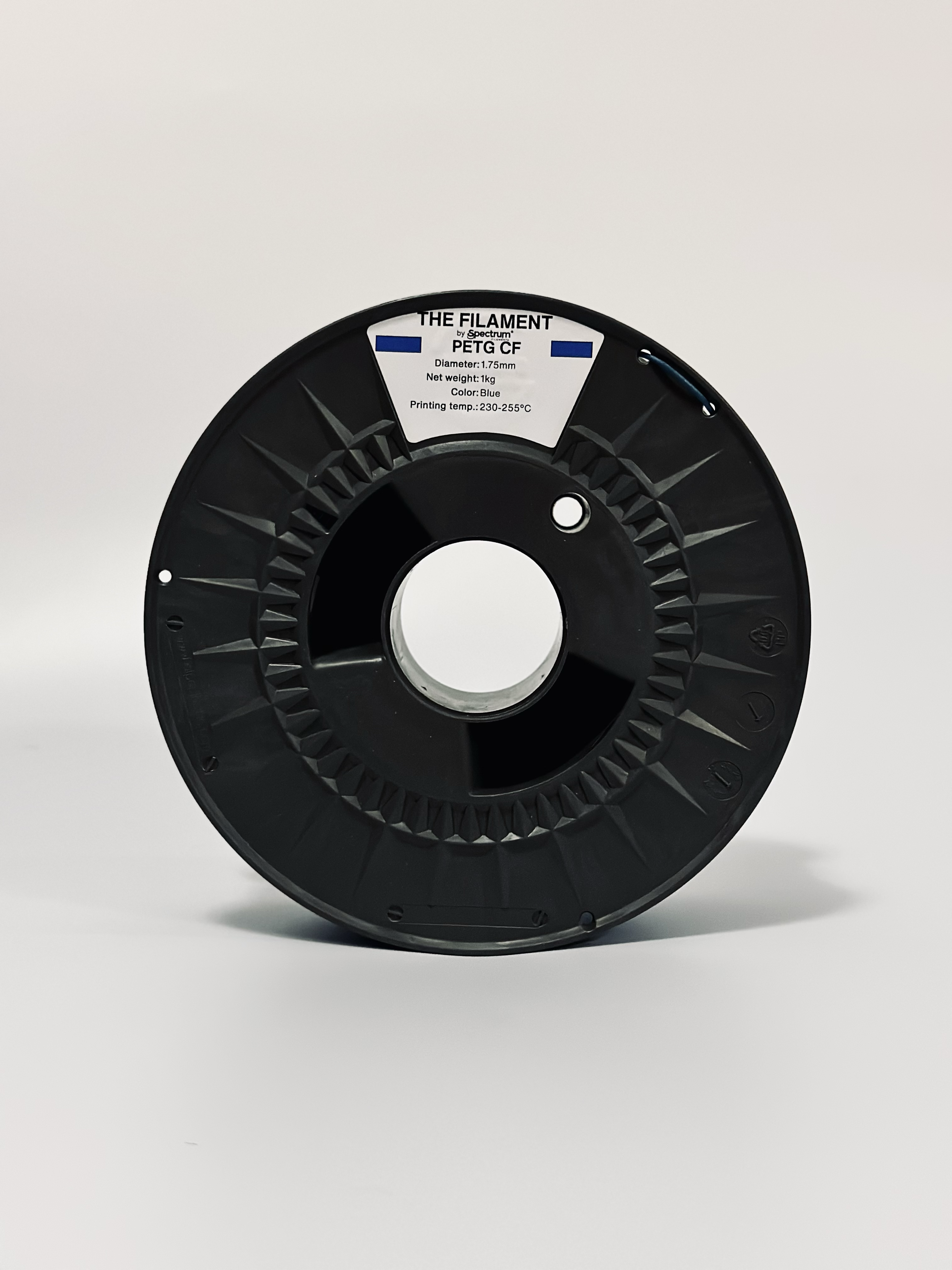PET-G vs PETG CF – what does carbon fiber add?
PET-G has become a trusted material for both beginners and advanced users. Known for its toughness, temperature resistance, and ease of use, PET-G strikes a balance between the printability of PLA and the durability of ABS.
However, with the demand for stronger and more stable materials rising, filament manufacturers have introduced PETG CF, or Carbon Fiber–Reinforced PETG. By adding carbon fiber strands to PET-G, this material offers a new level of strength, stiffness, and professional-grade quality.
But what exactly does carbon fiber change — and when is it worth using PETG CF over standard PET-G? Let’s explore this in depth.
What Is PET-G?
PET-G (Polyethylene Terephthalate Glycol) is a modified version of PET, a common plastic used in packaging and bottles. The addition of glycol during polymerization prevents crystallization, making the material less brittle and easier to process.
In 3D printing, PET-G stands out because it combines the best traits of PLA and ABS — it’s easy to print, resistant to moisture and chemicals, and has decent temperature resistance. It’s also known for its strong layer adhesion, making it suitable for functional parts that experience mechanical stress.


Property | Description |
Material Type | Co-polyester (PET modified with glycol) |
Print Temperature | 230–250°C |
Bed Temperature | 70–90°C |
Heat Resistance | Up to ~80°C |
Surface Finish | Glossy to semi-gloss |
Ease of Printing | High (beginner-friendly) |
Typical Uses | Prototypes, mechanical parts, containers, fixtures, enclosures |
PET-G offers a balance between strength and flexibility, making it ideal for functional prints that need to absorb impact or stress without cracking.
What Is PETG CF?
PETG CF is a composite filament made by mixing PET-G with short chopped carbon fibers — typically 10–20% by weight. These microscopic carbon strands are distributed throughout the polymer matrix, acting as reinforcements that increase the material’s rigidity and dimensional stability.
This composite behaves differently from pure PET-G. The carbon fibers don’t melt during extrusion; instead, they remain embedded within the polymer, reinforcing it mechanically and thermally.
The result is a filament that produces stiffer, lighter, and more dimensionally stable prints — ideal for applications where strength and precision matter most.


Property | Description |
Material Type | Carbon fiber–reinforced PET-G |
Carbon Fiber Content | 10–20% |
Print Temperature | 240–265°C |
Bed Temperature | 75–90°C |
Heat Resistance | 90–110°C |
Surface Finish | Matte, textured |
Nozzle Requirement | Hardened steel or ruby-tipped |
Typical Uses | Structural parts, drones, brackets, jigs, RC components, functional prototypes |
PETG CF is designed for users who want industrial-grade performance in FDM printing without stepping up to exotic engineering filaments like nylon or polycarbonate.
PET-G vs PETG CF – Direct Comparison
Category | PET-G | PETG CF (Carbon Fiber Reinforced) | What Carbon Fiber Adds |
Strength | Strong and impact-resistant | Stronger with higher tensile strength | Reinforcement increases load capacity |
Stiffness (Rigidity) | Moderately flexible | Very stiff, resists bending | Carbon fibers limit material flex |
Weight | Standard density | Slightly lighter | Carbon fibers reduce overall density |
Surface Finish | Glossy or semi-gloss | Matte and textured | Carbon fibers absorb light, creating a matte finish |
Dimensional Stability | Good | Excellent | Carbon fibers minimize shrinkage and warping |
Layer Adhesion | Excellent | Slightly reduced due to fibers | Requires tuning for best results |
Ease of Printing | Very easy | Moderate – needs hardened nozzle | Abrasive fibers require tougher hardware |
Nozzle Wear | Minimal | Abrasive | Requires hardened steel or ruby nozzle |
Flexibility | Slightly flexible | More rigid, less flexible | Reduced elongation due to fiber structure |
Ideal Use Cases | Everyday prints, enclosures, light-duty parts | Mechanical, structural, and aesthetic parts | Improved stiffness, finish, and performance |
Below is a video regarding the PETG-CF.
Considerations and Printing Tips
While PETG CF offers impressive advantages, it does come with a few requirements and trade-offs.
Printing Recommendations
Parameter | Recommended Setting |
Nozzle Type | Hardened steel, tungsten, or ruby-tipped |
Nozzle Diameter | ≥ 0.4 mm (preferably 0.6 mm) |
Nozzle Temperature | 240–265°C |
Bed Temperature | 75–90°C |
Bed Surface | PEI, glass with glue stick, or textured sheet |
Cooling Fan | Low to moderate (20–40%) |
Print Speed | 30–60 mm/s (slower for better layer bonding) |
Enclosure | Optional but helps consistency |
Drying | Required (carbon fiber attracts moisture less, but base PETG still can) |
Things to Watch Out For
- Abrasiveness: Carbon fibers are abrasive and can quickly wear down brass nozzles. Always use a hardened steel or ruby nozzle.
- Brittleness: PETG CF is stiffer but slightly more brittle than standard PET-G. Avoid using it for parts that need to bend or flex.
- Cost: The addition of carbon fiber makes PETG CF more expensive than standard PET-G, but the performance justifies it for demanding applications.
When to Use Each Material
Scenario | Recommended Material | Reason |
Printing household or decorative parts | PET-G | Easy, affordable, and forgiving |
Creating functional prototypes or jigs | PET-G | Good strength and layer adhesion |
Printing mechanical or load-bearing parts | PETG CF | Increased stiffness and durability |
Making drone frames or RC parts | PETG CF | Lightweight yet rigid structure |
Producing aesthetic parts with premium appearance | PETG CF | Matte, professional finish |
Flexible components needing impact absorption | PET-G | Slightly more elastic than CF version |
Conclusion
Both PET-G and PETG CF are outstanding filaments in their own right — but they serve slightly different purposes.
- PET-G remains the best all-around filament for everyday functional prints. It’s easy to use, reliable, and affordable.
- PETG CF, on the other hand, steps up the performance. By adding carbon fibers, it offers enhanced stiffness, higher strength, reduced warping, and a premium matte finish suitable for professional or mechanical applications.
If your 3D printing projects demand precision, strength, and a professional appearance, PETG CF is worth the upgrade — as long as your printer is equipped with a hardened nozzle and can handle slightly higher temperatures.
In short:
PET-G is versatile. PETG CF is performance-driven.
Choose the one that best fits your project’s needs.